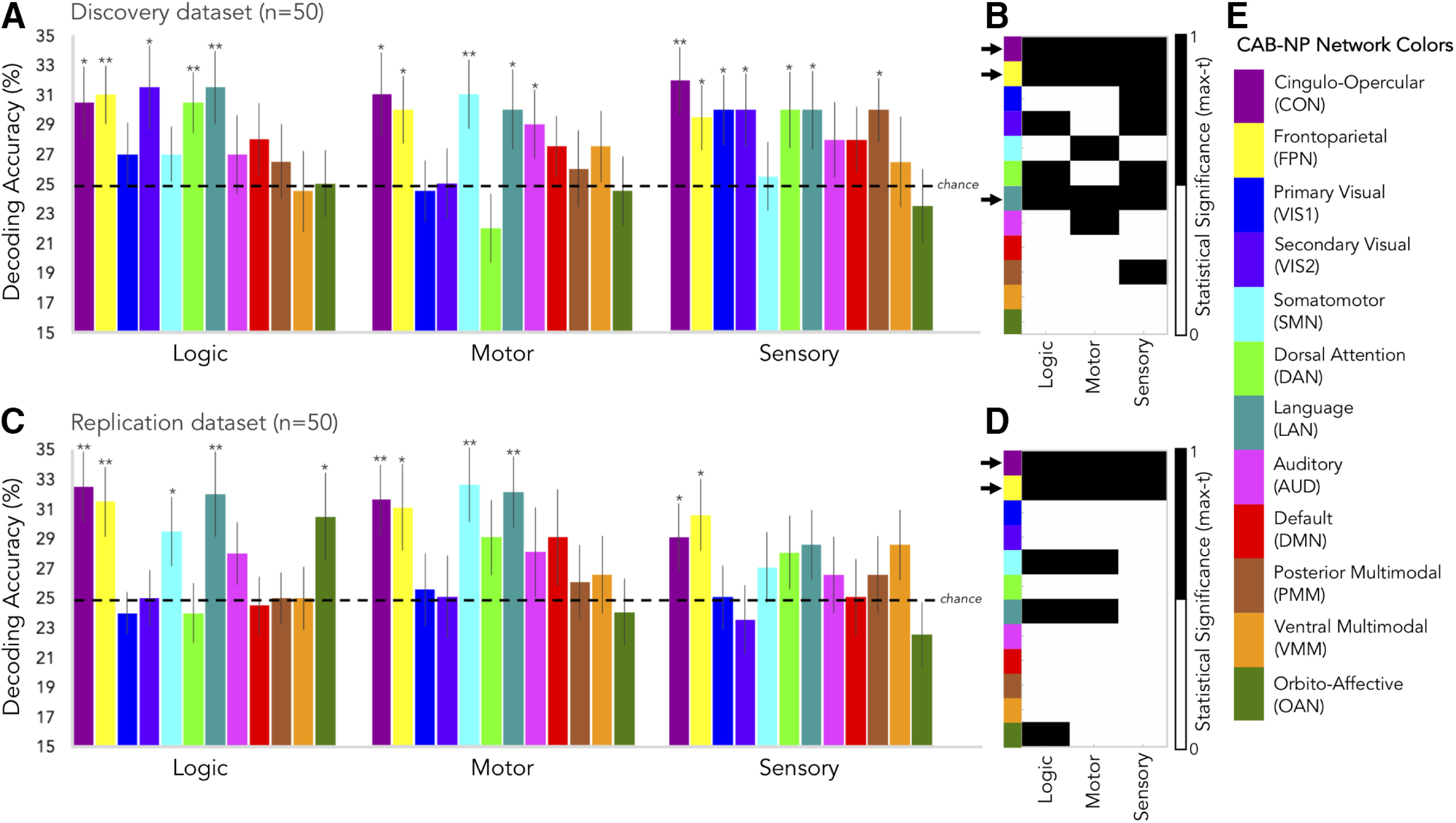Figure 8.

Decoding task rule information with task-state connectivity. A, Cross-subject (discovery dataset) network-mean decoding accuracies for logic, motor, and sensory rules (four-way classifications where chance accuracy was 25%, represented by the horizontal, dashed line). Error bars: SEM. Asterisks: statistically significant t tests using the max-T approach (see Materials and Methods). *p < 0.05; **p < 0.005. B, Statistical significance tallies (binarized: black = significant or 1, white = not significant or 0) for each network (y-axis, color-labeled) and each rule set (x-axis) for the discovery dataset. Black arrows to the left of y-axis color labels mark networks that significantly decoded all three types of rules, which included the control networks, CON and FPN, as well as the language network (LAN). C, Same as in A but for the replication dataset. D, Same as in B but for the replication dataset. The control networks, CON and FPN, were the only networks to significantly decode all three rule types in the replication dataset. LAN came close (as in B), but its statistical significance did not survive the permutation testing procedure for sensory rules. E, The CAB-NP color scheme used across all panels A–D (as in Fig. 3 but rearranged to highlight the cognitive control networks). Both FPN and CON connectivity patterns significantly decoded task rules above chance, demonstrating their importance in task representation.
